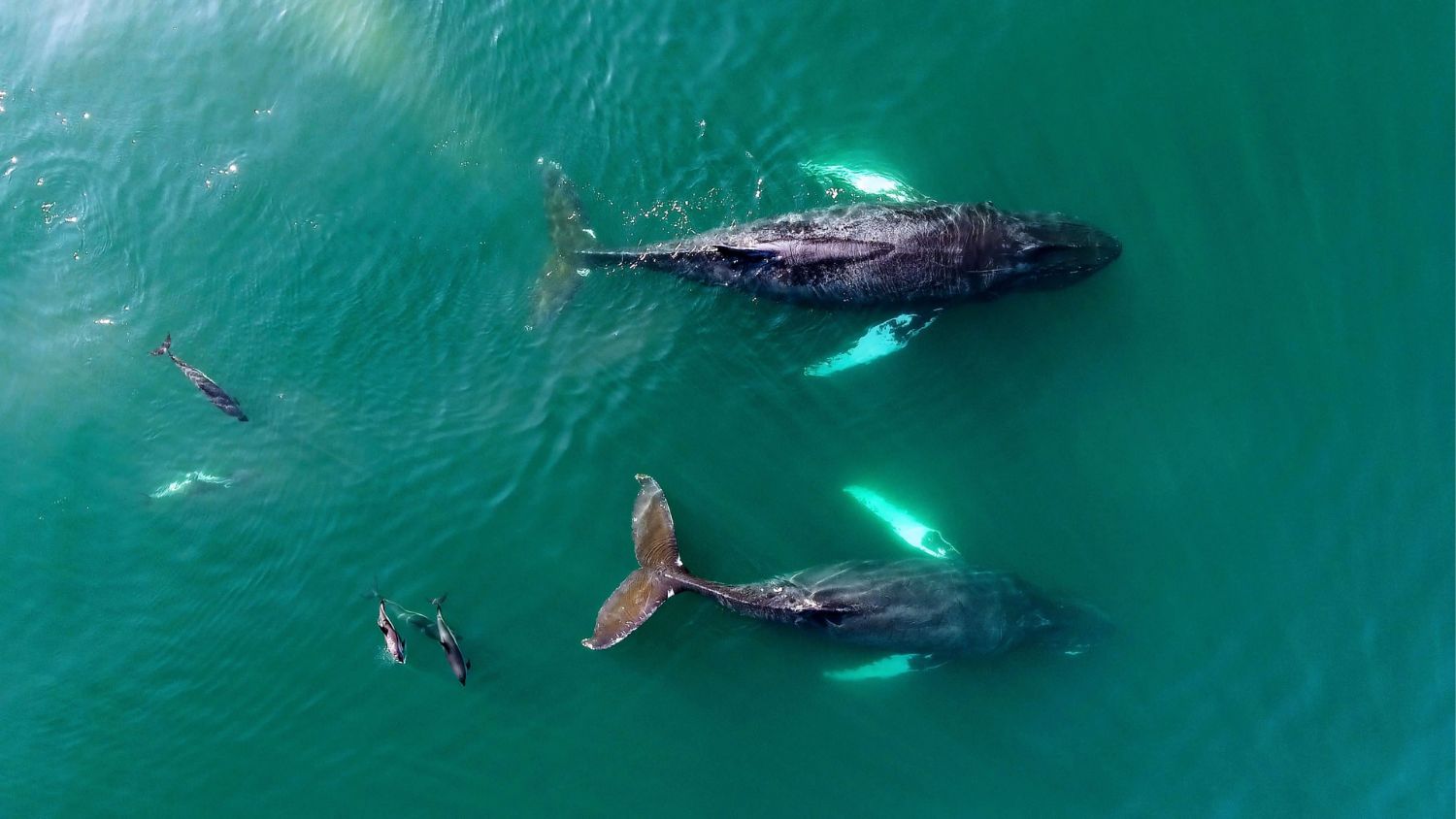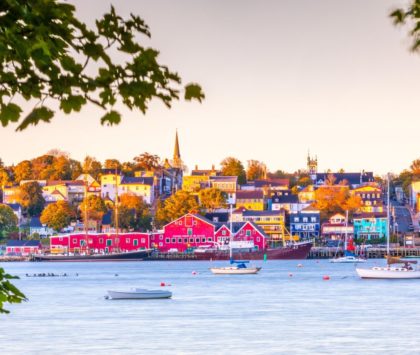There’s something soothing to the soul that comes from being so close to the sea. The sounds of waves and whirling birds overhead, the salty air that fills your lungs with a healthy dose of deep breaths, the people that have been calmed by living alongside the ocean’s heartbeat.
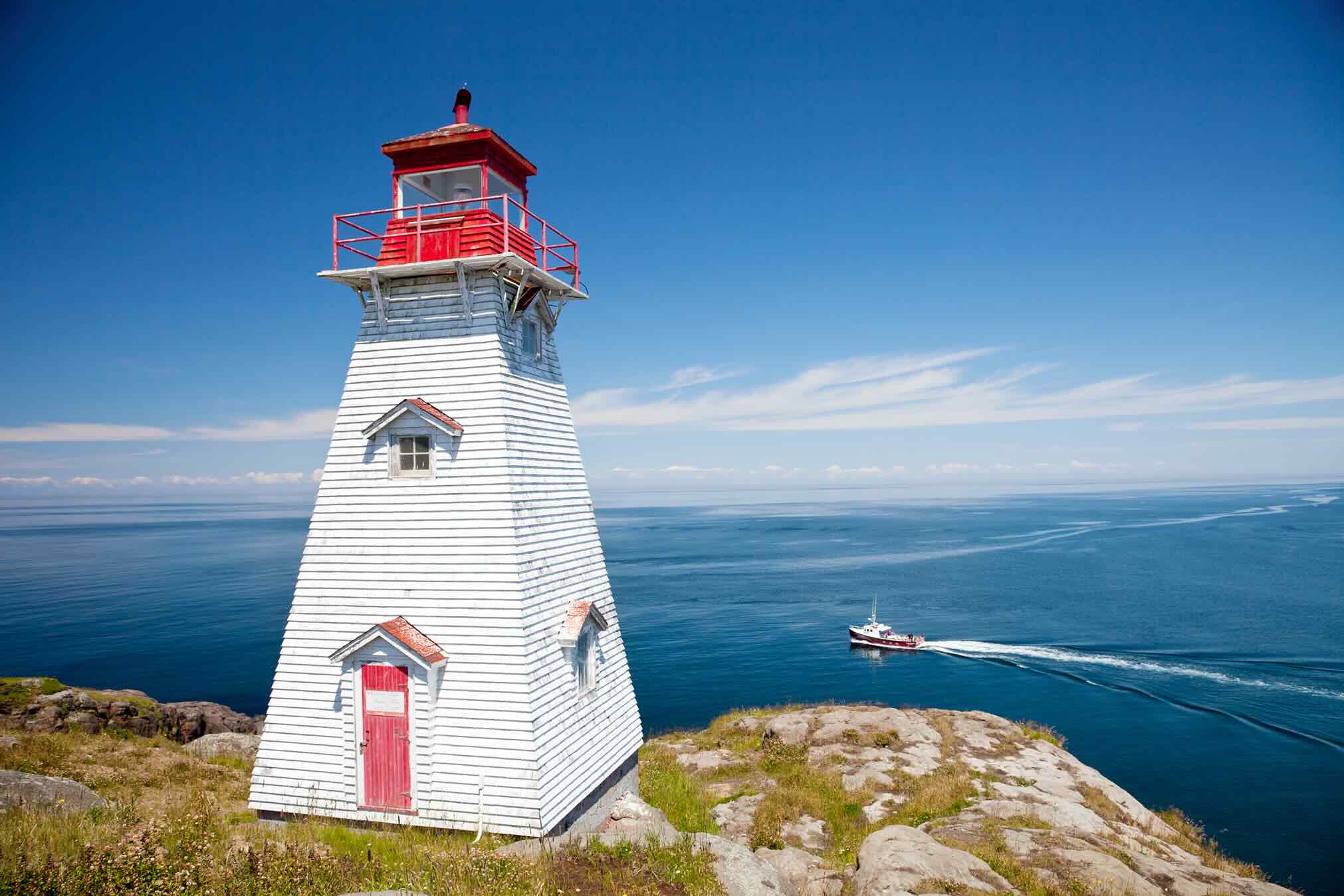
Bay of Fundy and Annapolis Valley. Tourism Nova Scotia / Photographer: Perry Dyke
In Nova Scotia, this is just another day. But Nova Scotians are generous by nature, and want to share all there is to do in this wondrous ocean playground they call home.
A Day to Remember
Start with a wake-up call at the water’s edge. Sip coffee from your porch at Quarterdeck Beachside Villas and Grill, and have a soft, sensory entry to your day while listening to the waves kiss Summerville’s stretch of white sandy beach. This is ASMR therapy of the ultimate kind.
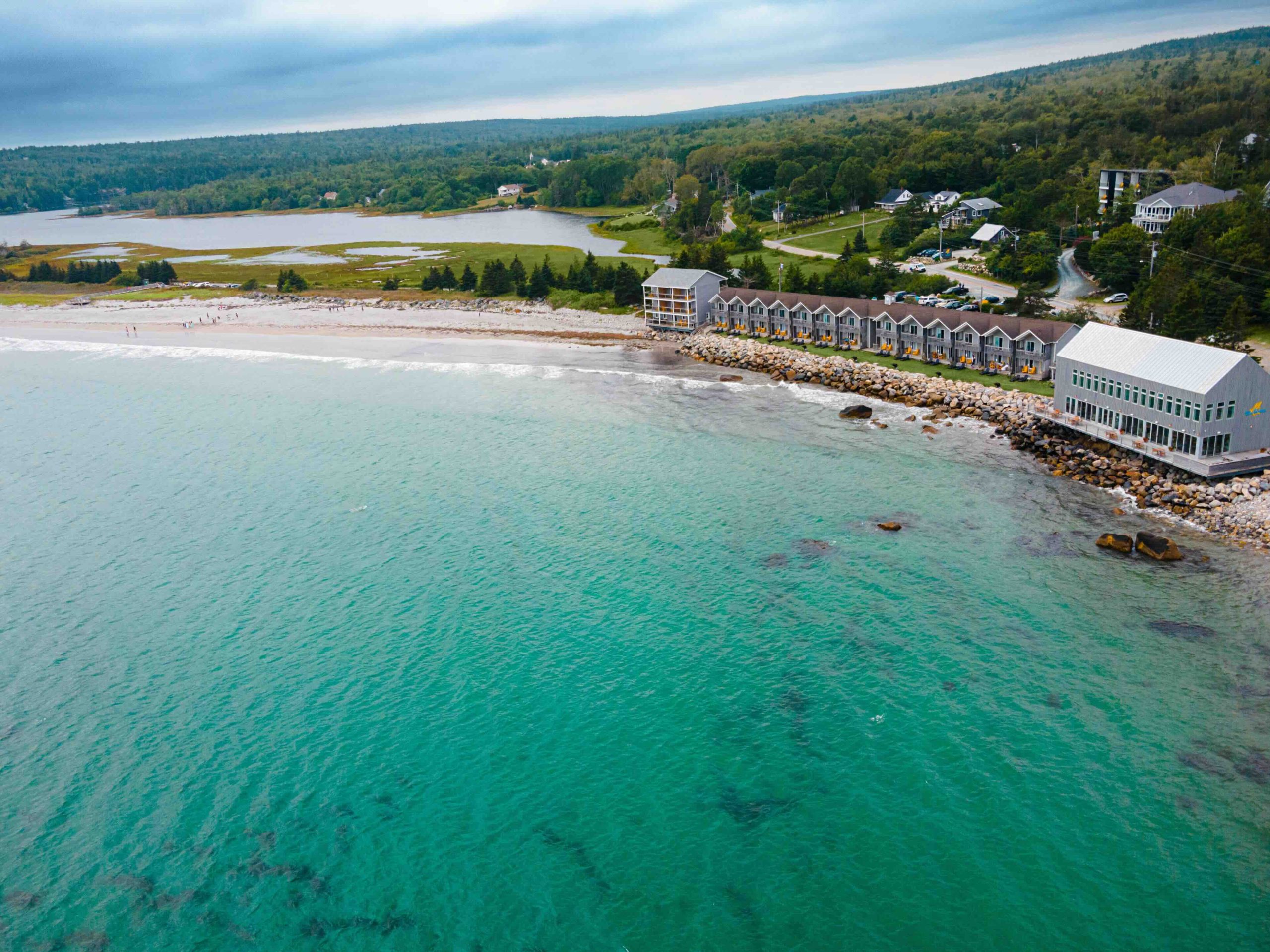
Quarterdeck Resort
If you’re a wine lover, your terroir lexicon will no doubt include such words as Bordeaux, Chianti or Napa Valley, but it should also include Tidal Bay – this is Nova Scotia’s signature wine. Nova Scotia is a cool-climate wine-making region, where grapes are grown predominantly in the Annapolis Valley region which borders the world famous Bay of Fundy. Known for a balance of crisp, fresh-green fruit, acid,
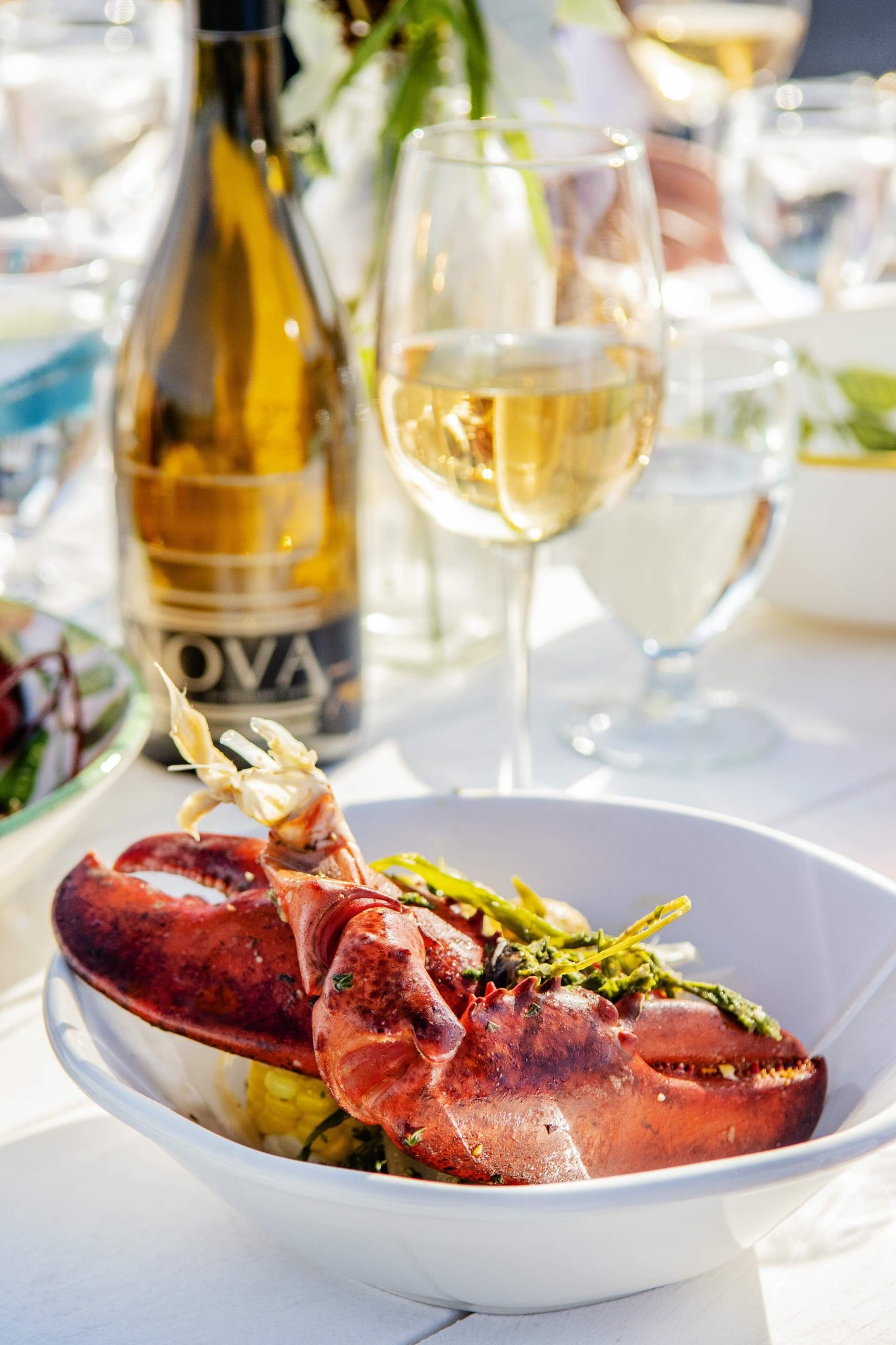
Tourism Nova Scotia / Photographer: Aaron McKenzie Fraser
and no more than 11 per cent alcohol, the grapes used in the making of Tidal Bay have to meet strict criteria and of course have to be 100 per cent Nova Scotia-grown. There are more than a dozen wineries in the province that meet the high, award-winning standards of the Tidal Bay appellation.
Take a trip to the Yarmouth and Acadian Shores area on the Southwestern tip of the province to the community of Clare and Baie Sainte Marie, where you can revel in Acadian culture amongst the residents, the majority of whom are bilingual. This year, the region is hosting the Congrès Mondial Acadien (August 18-24) which will bring to the region Acadian diaspora from across the world for nine days of celebrations, discovery and family reunions. Discover the warm and welcoming people from this rural corner of Nova Scotia, as well as their tastes and traditions, as they celebrate more than 400 years of Acadian history! But keep in mind that no matter what time of year you visit, there’s always lively traditional music (you’re always welcome at a kitchen party!), fantastic regional food (go digging for clams) and general conviviality.
Food, Glorious Food

PHOTO: Tourism Nova Scotia
Barrington, Nova Scotia, is the Lobster Capital of Canada so we’d be remiss if we didn’t talk about lobster! When it’s this fresh, cracking those claws and dipping them in warm drawn butter is a tasty, briny explosion that needs no other accompaniment.
Fished year-round from the bracing waters of the Atlantic, the crustacean plays a starring role on the Nova Scotia Lobster Trail, where more than 30 foodie establishments, from eat-with-your-hands delights to high-end, how would you like your lobster cooked, dining experiences, are featured along the route.
But don’t stop there. Mussels, oysters, crabs and clams are also on the menu. Steamed in white wine, infused in a chowder, shucked with the sea’s salty water still on the shells…there are so many ways to indulge. And then there are the scallops. Digby is renowned the world over for these delicate, buttery shellfish, plucked straight from the waters off the iconic Bay of Fundy. There’s nothing quite like it.
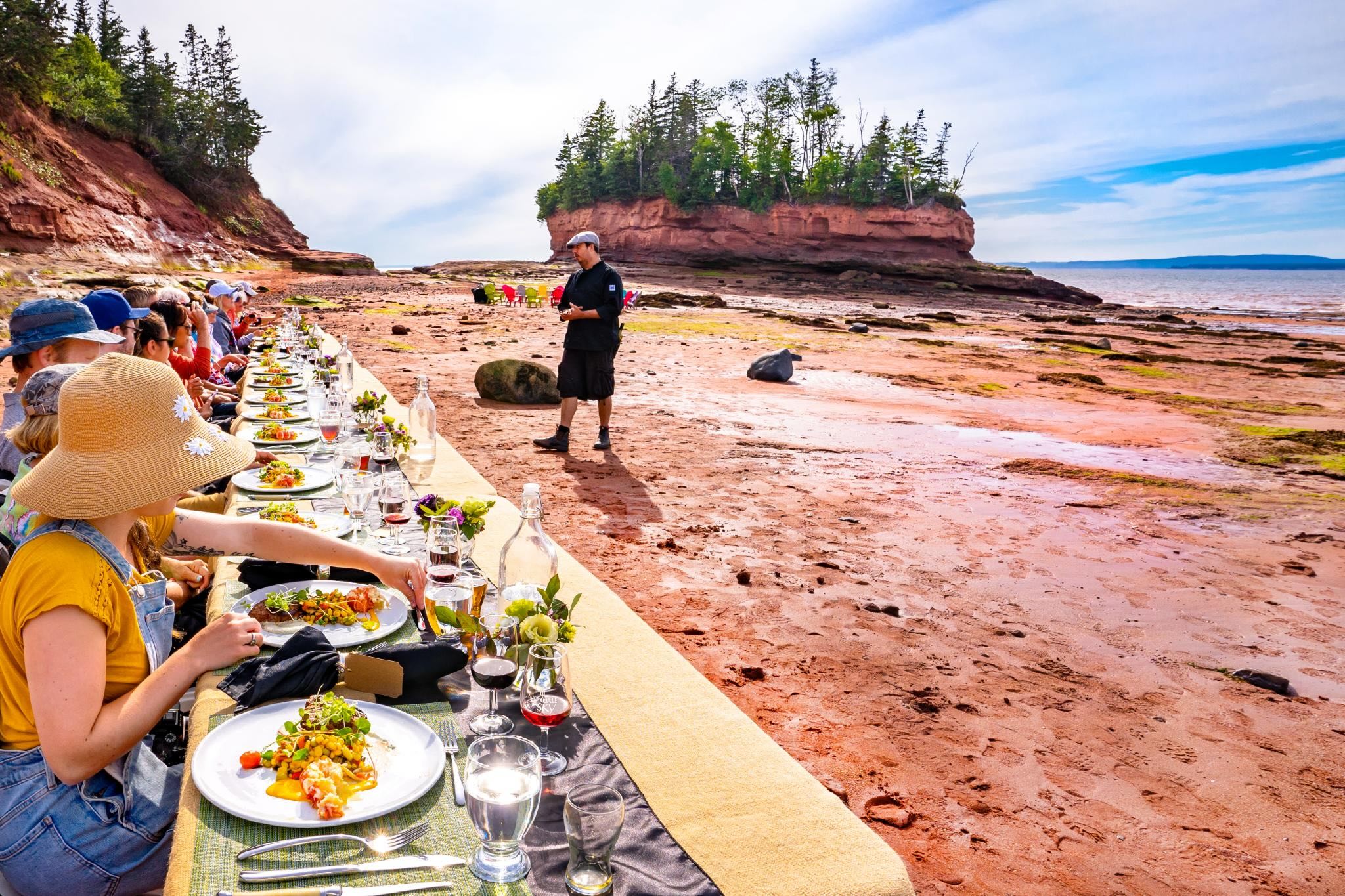
Dining on the Ocean Floor Experience. Tourism Nova Scotia / Photographer: @daveyandsky
And did we mention the region’s culinary diversity? It’s not just about seafood. The province is also home to an abundance of farm-fresh produce and markets to complement the offerings of the area’s award-winning wineries, breweries, cideries and distilleries. Did you know that in Halifax, it’s a right of passage to grab a Donair – the official food of the city. Brought here by a Greek immigrant in the 1970s, it’s been a staple only made better with Lebanese and Turkish influences.
Speaking of immigration, Halifax and the seaport at Pier 21 was the gateway to Canada, welcoming more than a million people who crossed the Atlantic ocean looking for a better life from all over the world from the 1920s to the 1970s. The Canadian Immigration Museum at Pier 21 is now a fascinating museum with an extensive library of records of those who came through its doors. The seaport district itself now welcomes thousands of cruise passengers annually who are looking for a glimpse into one of Canada’s most popular ports of call, Nova Scotia’s capital city of Halifax and beyond, particularly from April through November.

Canadian Museum of Immigration at Pier 21. PHOTO: Tourism Nova Scotia
Go Deeper – the Indigenous Experience
For more than 10,000 thousand years, this rugged, sea-swept peninsula has been home to the Mi’kmaq people who have enriched this land, Mi’kma’ki, with their legends, art, music, spirituality, history, and language.

Eskasoni Cultural Journeys, Goat Island, Cape Breton. Tourism Nova Scotia / Photographer: Dean Casavechia
Take a Mi’kmaq Medicine Walk in Membertou on Unama’ki – Cape Breton Island, guided by a First Nations cultural ambassador. This elemental take on well-being and traditional medicines enriches the mind while this one-of-a-kind stroll through the tree-lined trails is Nova Scotia’s answer to forest bathing for the spirit. Visit Kejimkujik National Park and National Historic Site where you can paddle ancient, storied canoe routes to discover petroglyph carvings in stone. Or take a guided Mi’kmaw cultural walk on Goat Island to share stories, feasts and music of the traditional way of life.
Four Season Sensation
Think Nova Scotia is just for the summer? Think again. The Nova Scotia Lobster Crawl Festival is held annually throughout the month of February, while some of the best winter surfing can be experienced at Lawrencetown Beach from October to March. Experience the splendour of a Nova Scotia winter in a new way – take a beach walk, go on a fat bike ride on the ocean floor, snowshoe a favourite trail with incredible snow-covered views, or take a ride in the only gondola in Atlantic Canada to the top of Cape Smokey. After a day outdoors, enjoy a meal of comfort food at a nearby restaurant paired with local craft beverages, and settle into a seaside cottage or yurt, cabin nestled in the trees, or geodesic dome with views of the stars.

